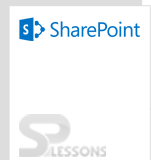A list is a collection of information that you share with team members. We can customize and add items to these lists, create additional lists from the list templates that are already available, and create custom lists with just the settings and columns that you choose.
Lists have many features such as workflows, item-level or list-level permission, version history tracking, multiple content-types, external data sources and many more features. Some of these features depend on the version of SharePoint that is installed.
A Library is a list where each item in the list refers to a file that is stored in SharePoint. Libraries have all the same behaviors as lists, but because libraries contain files, they have extra features. One of these is the ability to be opened and modified throught a compatible WebDAV client (e.g. Windows Explorer).
- Announcement Lists
- Blogs
- Contacts
- Discussion Boards
- Links
- Calendar
- Tasks
- Survey
- Picture
- Custom



